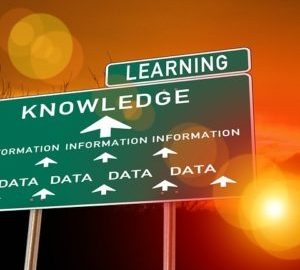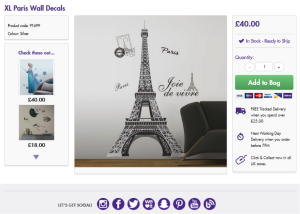— October 26, 2017
The consumer journey itself has changed dramatically over the past few years. The route to purchase still revolves around some key stages.
Today, consumers use numerous devices to compare, share, learn and consumer information make purchasing decisions. The journey crosses some touchpoints, ranging from websites to online review sites, large e-commerce sites like Amazon to social media, with every single experience impacting a consumer’s purchasing decision.
As the journey becomes more fragmented, consumers continue to demand consistency

jonbonsilver / Pixabay
Consumers regardless of where or how the interaction takes place, they expect companies to know who they are and what information they need. As a result, marketers need to be investing in consumer journey mapping.
Customer journey maps are a detailed overview of the customer experience. They detail how consumers interact with a brand at every touchpoint. But how do they help brands in real terms? We’ve highlighted six ways…
This leads to the questions:
Do they assist brands in practical terms?
Below are six ways that mapping the customer journey drives the brand experience…

geralt / Pixabay
1. Consumers are requesting a more tailored brand experience
Mapping the customer journey and all potential interactions with a brand, marketers can develop more efficient and customized brand experiences. This allows the brand to have an improved measurement of campaign effectiveness.
Mapping reduces the potential risk of overlooking niche audiences and individual customers, who have not taken the next step in the current map to purchase.
Consumer journey maps that are based on reliable data are critical to paint an accurate picture of your consumers and create an experience that reflects the data
Customer journey maps allow for improved planning to better understand your target audience.
2. Customer Journey Maps Focus on Building Empathy
Marketers develop brand personas filled with traditional demographics and enhanced with rich behavioral, attitudinal and perceptions data. These detailed personas are the core of consumer maps.
Customer journey maps when efficiently done can assist marketers to build empathy with their Brand teams can use the journey maps to help in understanding the buyer’s mindset, perceptions, and motivations to predict future behavior.
If I had to pick one example of a brand that reinforces the focus on and the need for empathy, it would be Airbnb. Putting the customer first is the heart of the Airbnb customer and brand strategy. Using storytelling and storyboarding, Joe Gebbia, Co-Founder explains how the team use storyboarding to get employees inside their customers’ heads.
“Bringing words to life, storyboards show you things that words can’t,” he said. We embarked on an ambitious project to map the entire guest and host terrain of Airbnb, and we did it through illustration”, he says.
“We embarked on an ambitious project to map the entire guest and host terrain of Airbnb and we did it through illustration. We looked at key emotional moments of the journey and we drew them. We visualized them. And what it’s done for us, it’s allowed our entire company to achieve a whole new level of empathy with our customers.”
3. Mapping the Customer Journey Guides Consumers Towards Purchase
The role of marketing in any company is to drive brand awareness and move the customer from considering a product to purchase. Every consumer is different and requires a different approach and every stage of the purchase funnel.
Someone not familiar with your brand or technology will need more information than someone who is. Customer journey maps need to be developed for where and at what stage the customer enters the funnel with content that aligns with their step in the process.
This allows marketers to have a much deeper understanding of where and which stage each unique buyer is at, and what their needs are as they move towards conversion.
Customer Journey maps guide marketing and other aspects of a business to ensure the right message is always delivered to the right person, at the right time.
4. Customer Journey Mapping Identifies Critical Touchpoints

Hans / Pixabay
Walking in your customer’s’ shoes aids in your understanding of the customer on a more personal level. This exercise, allows a brand to align its communication plan to the customer’s needs.
The ability to identify which touchpoints are needed to help achieve consumer-centric goals, and where they are necessary, be it, in-store, on the phone, via a website or a brand’s social media channel, for example.
Customer touchpoint an opportunity to interact with and engage with the customer. The ability to expand these touchpoints give you ‘moments of truth’ that are critical milestones on any customer journey. In-depth audience data provides the opportunity reveal these moments of truth such as pain points, problems they are looking to solve and more.
Real life customer audience data brings a new level of understanding and insights that bring value to an entire business, from marketing to production.
5. Some Steps in the Customer Journey Need More Attention
Real customer data allows marketers to monitor their target audience and analyze behavior; this is the foundation of all customer journey maps. By using actual data points, customer journey maps can be validated, and each length of the stage of the buying cycle established to determine successful mapping.
By using real data, analysis can be done that looks for pain points in the mapping. Marketers can look for points where certain stages are causing irritation for custoemrs and where they are dropping out of the funnel.
Analysis of audience insight data illustrates areas that need improvement. This gives brand teams the ability to focus and deliver the content at the right time and stage to enhance the customer experience.
6. Customer Journey Mapping Keeps Business Objectives Moving in the Right Direction
When executed correctly, a customer journey map involves every department in a company. The map creates a framework for departments to work together to improve overall company performance. Gaps that emerge in the customer journey from the start of the sales funnel to the end can assist business decisions and corporate investments.
Priorities are established by mapping the customer journey and allows for open communication as to why select actions are of a higher priority than others. Another benefit is organizational silos are broken down as the entire company focuses on the needs and expectations of their target audience. In essence, a customer journey map makes organizations customer-centric.
A customer journey map makes organizations customer-centric.
There is no one size fits all customer journey maps, each is unique to the company and as varied as their target audience. The one commonality is the all customer journey maps are based on reliable data that reflects real consumers.
Creating a customer journey map takes time, data and commitment. However, the exercise can and will improve company revenue and focus. When implemented with senior management commitment, the impact throughout the organization and results in a customer-centric commitment to the marketplace.
Originally posted on Carolforden.com
Digital & Social Articles on Business 2 Community
(88)
Report Post





